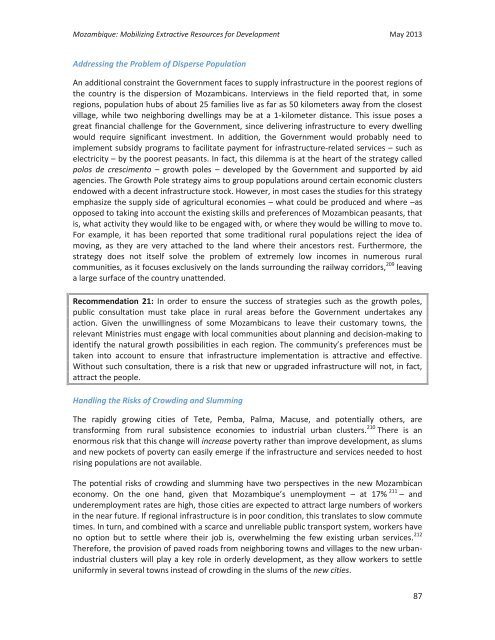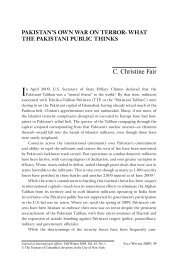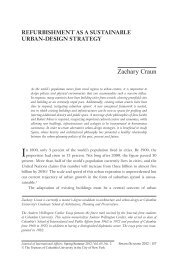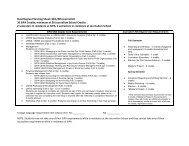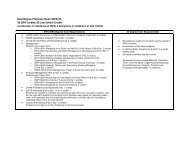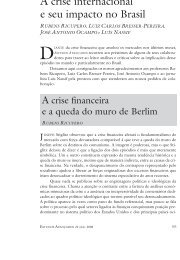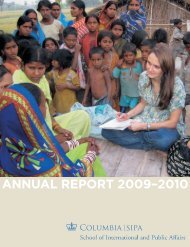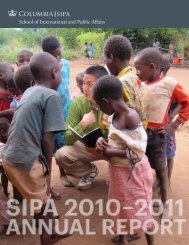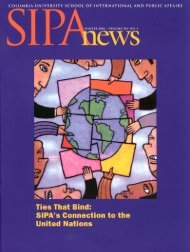Mozambique - School of International and Public Affairs - Columbia ...
Mozambique - School of International and Public Affairs - Columbia ...
Mozambique - School of International and Public Affairs - Columbia ...
You also want an ePaper? Increase the reach of your titles
YUMPU automatically turns print PDFs into web optimized ePapers that Google loves.
<strong>Mozambique</strong>: Mobilizing Extractive Resources for Development May 2013<br />
Addressing the Problem <strong>of</strong> Disperse Population<br />
An additional constraint the Government faces to supply infrastructure in the poorest regions <strong>of</strong><br />
the country is the dispersion <strong>of</strong> Mozambicans. Interviews in the field reported that, in some<br />
regions, population hubs <strong>of</strong> about 25 families live as far as 50 kilometers away from the closest<br />
village, while two neighboring dwellings may be at a 1-kilometer distance. This issue poses a<br />
great financial challenge for the Government, since delivering infrastructure to every dwelling<br />
would require significant investment. In addition, the Government would probably need to<br />
implement subsidy programs to facilitate payment for infrastructure-related services – such as<br />
electricity – by the poorest peasants. In fact, this dilemma is at the heart <strong>of</strong> the strategy called<br />
polos de crescimento – growth poles – developed by the Government <strong>and</strong> supported by aid<br />
agencies. The Growth Pole strategy aims to group populations around certain economic clusters<br />
endowed with a decent infrastructure stock. However, in most cases the studies for this strategy<br />
emphasize the supply side <strong>of</strong> agricultural economies – what could be produced <strong>and</strong> where –as<br />
opposed to taking into account the existing skills <strong>and</strong> preferences <strong>of</strong> Mozambican peasants, that<br />
is, what activity they would like to be engaged with, or where they would be willing to move to.<br />
For example, it has been reported that some traditional rural populations reject the idea <strong>of</strong><br />
moving, as they are very attached to the l<strong>and</strong> where their ancestors rest. Furthermore, the<br />
strategy does not itself solve the problem <strong>of</strong> extremely low incomes in numerous rural<br />
communities, as it focuses exclusively on the l<strong>and</strong>s surrounding the railway corridors, 209 leaving<br />
a large surface <strong>of</strong> the country unattended.<br />
Recommendation 21: In order to ensure the success <strong>of</strong> strategies such as the growth poles,<br />
public consultation must take place in rural areas before the Government undertakes any<br />
action. Given the unwillingness <strong>of</strong> some Mozambicans to leave their customary towns, the<br />
relevant Ministries must engage with local communities about planning <strong>and</strong> decision-making to<br />
identify the natural growth possibilities in each region. The community’s preferences must be<br />
taken into account to ensure that infrastructure implementation is attractive <strong>and</strong> effective.<br />
Without such consultation, there is a risk that new or upgraded infrastructure will not, in fact,<br />
attract the people.<br />
H<strong>and</strong>ling the Risks <strong>of</strong> Crowding <strong>and</strong> Slumming<br />
The rapidly growing cities <strong>of</strong> Tete, Pemba, Palma, Macuse, <strong>and</strong> potentially others, are<br />
transforming from rural subsistence economies to industrial urban clusters. 210 There is an<br />
enormous risk that this change will increase poverty rather than improve development, as slums<br />
<strong>and</strong> new pockets <strong>of</strong> poverty can easily emerge if the infrastructure <strong>and</strong> services needed to host<br />
rising populations are not available.<br />
The potential risks <strong>of</strong> crowding <strong>and</strong> slumming have two perspectives in the new Mozambican<br />
economy. On the one h<strong>and</strong>, given that <strong>Mozambique</strong>’s unemployment – at 17% 211 – <strong>and</strong><br />
underemployment rates are high, those cities are expected to attract large numbers <strong>of</strong> workers<br />
in the near future. If regional infrastructure is in poor condition, this translates to slow commute<br />
times. In turn, <strong>and</strong> combined with a scarce <strong>and</strong> unreliable public transport system, workers have<br />
no option but to settle where their job is, overwhelming the few existing urban services. 212<br />
Therefore, the provision <strong>of</strong> paved roads from neighboring towns <strong>and</strong> villages to the new urbanindustrial<br />
clusters will play a key role in orderly development, as they allow workers to settle<br />
uniformly in several towns instead <strong>of</strong> crowding in the slums <strong>of</strong> the new cities.<br />
87


